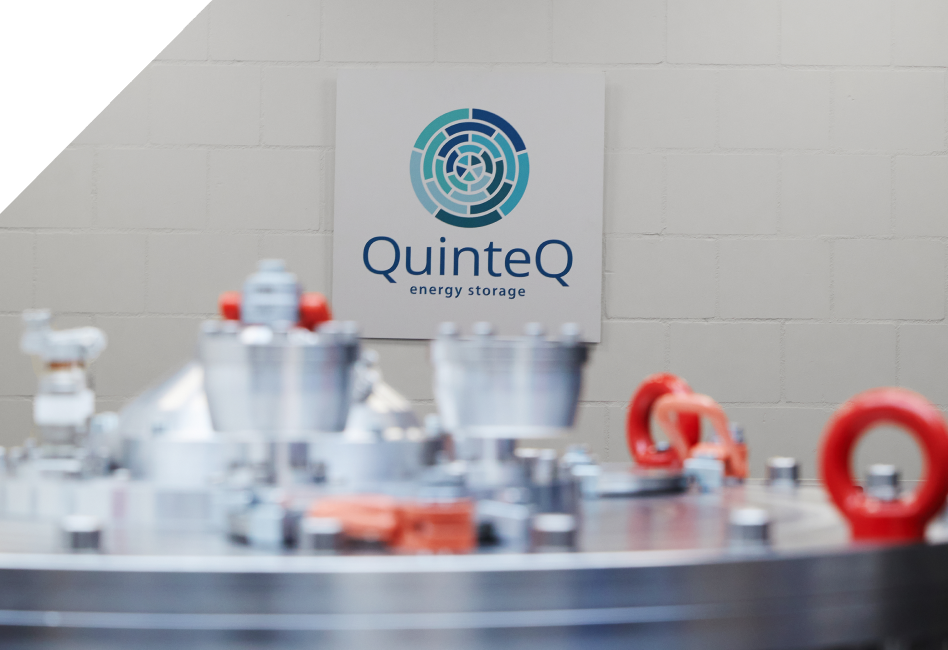Peak Shaving vs. Load Shifting
Summary
Peak shaving and load shifting are two strategies used to balance electricity demand and prevent grid congestion. This article explains the difference between them, how each method works in real-world energy systems, and why flywheel energy storage is ideal for short, high-power peak shaving applications in ports and construction sites. You’ll learn how these concepts support a more efficient, sustainable, and reliable power grid connection.
Introduction
As the energy transition continues to advance, so does people’s awareness of the complex and varied ways that energy works. We think it is essential for everyone to learn these key concepts to understand the future of our energy usage. But as with learning any new subject, certain topics can be confusing. For example, we are seeing the terms peak shaving and load shifting being used online; generally, we think this is great (and people should talk about them more!). But sometimes they are used in the wrong context, or with the wrong definition, or sometimes even used interchangeably. With this blog, we’re aiming to clear up some of the confusion surrounding these terms, give you some real-life examples, and show you why flywheels are perfect for peak shaving.
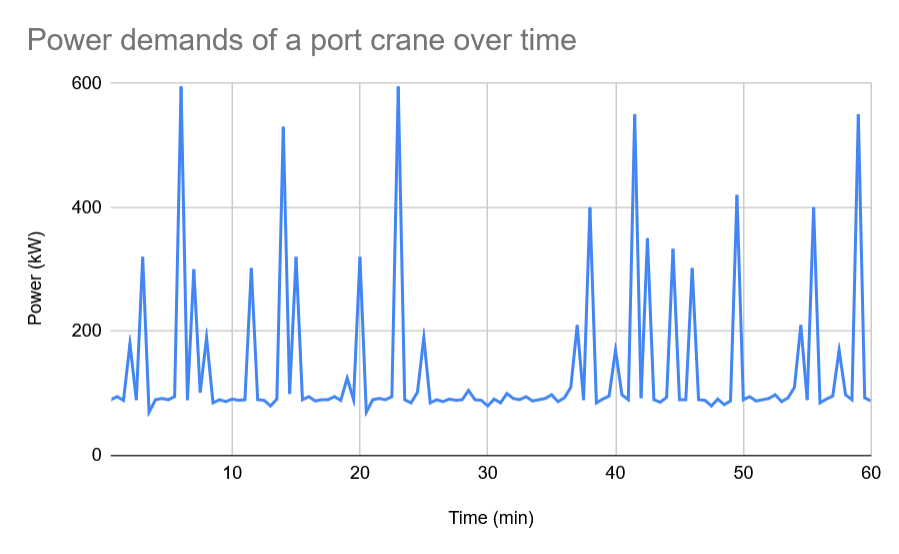
What is a peak?
First thing’s first, we have to clear up what is meant by “peaks”. This definition differs from person to person and sector to sector! The fact is that peaks can help explain both the generation and consumption sides of energy, but they mean different things for both: for example, on the generation side, a solar farm operator sees peaks as the nominal power of their solar panels—that is, the maximum power output they can achieve under optimal conditions. On the other hand, from a consumption standpoint, a terminal operator sees peaks as the maximum power needed from the grid during high operational activity; essentially, the highest power usage during periods of high demand, such as when all the terminal harbor cranes are being used simultaneously.
There’s also the question of time. Peaks can mean different things in different time frames, since you can have peaks over long periods of time (so-called long peaks, which can last hours) and peaks over short periods of time (known as short peaks, which can last mere seconds).
So the term “peaks” can be a bit confusing, but as long as you keep in mind both the energy context in which it is used (generation or consumption) and the time frame in which it is applied (long vs. short term) it becomes easier to understand.
In short, a peak refers to a period of maximum generation or consumption within a given time frame; seconds, minutes, or hours.
Peak shaving vs. load shifting: What’s the difference?
Diving into the core question of this blog, what is the difference between peak shaving and load shifting? These terms are sometimes used interchangeably, and while they share some key ideas they are actually quite different, especially in terms of time span and implications of energy and power.
Load shifting refers to the moving of energy consumption from periods of high demand to periods of low demand, by storing energy in capacity batteries during quieter moments to be used later. This typically happens over longer time spans, ranging from hours to even days. An essential part is that it deals with energy consumption, moving it to an earlier or later time to reduce the strain on the grid during peak demand.
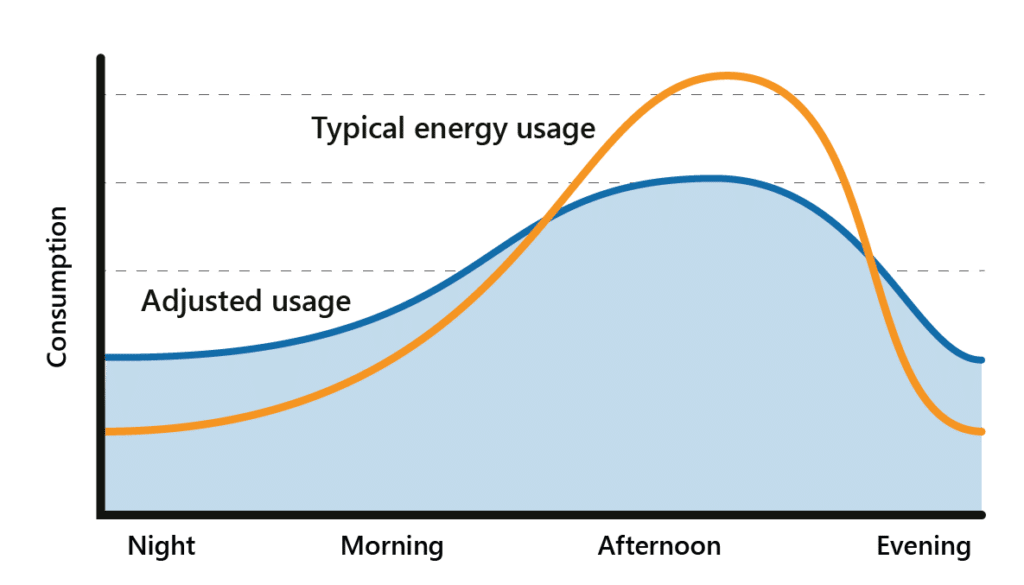
Peak shaving refers to the reduction of high power spikes during periods of high demand, also by storing energy in energy storage systems to be distributed when needed. Peak shaving works in very short time periods, ranging from minutes to even seconds, looking for immediate reductions in power demand by providing a high power burst. A key aspect of peak shaving is that it deals with power demand, reducing it by drawing energy during short power peaks that was stored earlier.
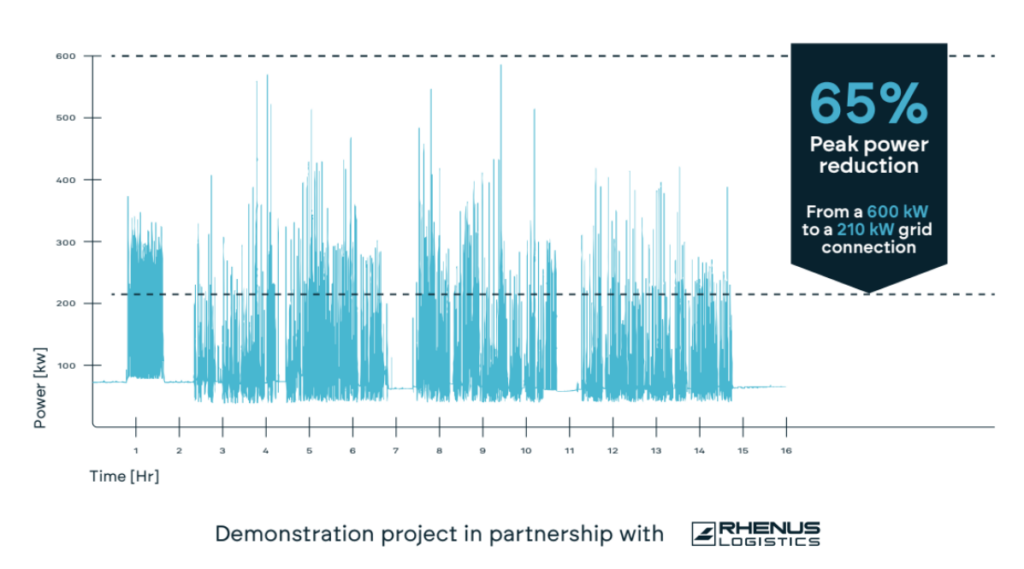
Essentially, while load shifting moves when energy is consumed, peak shaving limits how much power is drawn at once, making it ideal for short, high-power spikes.
In action: What do load shifting and peak shaving look like in real life?
Think again of a solar farm: they collect and store excess solar energy during the day, when sunlight is abundant, and discharge it later in the evening as energy demand increases from people coming home and as solar generation decreases. Or consider how when people come home from work in the evening, electricity consumption goes up and the grid becomes heavily congested. Load shifting works here by shifting this evening load to an earlier time when demand and corresponding energy prices are lower, storing energy in batteries during the day to be expended later at night.
Now imagine a port crane: it uses a lot of power to lift and lower containers, but only over short periods of time—from mere minutes to seconds. These high power peaks heavily congest the grid, leaving port operators with limited grid capacity. This is where peak shaving comes in: power-oriented energy storage solutions can store energy to be delivered when a crane is operated, essentially shaving the power peak and freeing up space on the grid.
So despite sometimes being used interchangeably, peak shaving and load shifting each have their distinct use cases: load shifting for balancing the grid, and peak shaving for maximizing your grid connection.
Peak shaving: What do you need?
The ideal technology for peak shaving short and frequent power peaks are flywheels. Flywheels are energy storage devices that are perfectly suited for peak shaving for five reasons:
- High power output: Flywheels are perfect for delivering a lot of power in very little time, which is exactly what is required for peak shaving.
- Mechanical design: Flywheels don’t require chemical reactions to store and release energy like conventional chemical batteries. This makes for a more robust energy storage system, meaning that the flywheel does not lose power over time and is not sensitive to depth of discharge.
- Near-endless cycles: Unlike chemical batteries, flywheels don’t degrade over time or with repeated charging/discharging cycles—they can store and release energy continuously with no loss in performance and also have far longer lifespans, all with no added fire hazard. Maintenance and part-swapping can further extend the lifespan of the flywheel, while chemical batteries will degrade and must be completely replaced.
- Fast response time: Flywheels are capable of near-instantaneous discharge of energy, making them ideal for smoothing power peaks by delivering power the moment it is needed.
- Sustainable design: With no need for active and hazardous materials such as lithium or cobalt, flywheels are safe and sustainable, with most flywheel designs being recyclable.
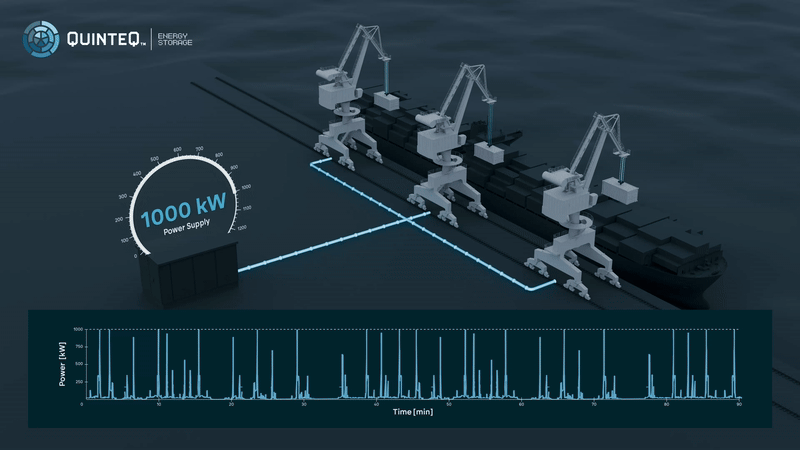
What do we offer?
QuinteQ’s flywheel energy storage system offers all of the above, but with the addition of being fully recyclable and with all of its components being sourced from and manufactured in the EU. What does this mean? Our production is secure from global supply challenges and geopolitical disputes, ensuring that you can always receive your products and parts without disruptions. Furthermore, our THOR flywheel system is one of the most advanced of its kind, with the ability to deliver 300kW to 4MW in a 10ft or 20ft container, all with a lifetime of over 15 years. This compact solution opens new possibilities for applications where space is limited, or deployment is temporary.
In summary, peak shaving and load shifting are two different (but complementary) energy management techniques that improve grid stability and efficiency. Flywheel storage—especially QuinteQ’s high-performance systems—offers an ideal solution for rapid-response peak shaving, reducing grid congestion while enabling sustainable, reliable operations in ports, construction sites, microgrids, and beyond.
To learn more about our flywheel and how it works, check out our blog and technology page, and stay tuned for more articles in the near future!


